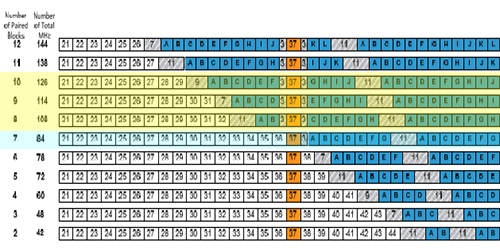Broadcasters Seek $40.3 Billion for 108 MHz

WASHINGTON—Broadcasters participating in the TV spectrum incentive auction are seeking $40.3 billion for the 108 MHz now targeted for clearing.
The reverse portion of the auction, where broadcasters name their price for spectrum, today concluded for a third stage of the incentive auction, as expected. The Federal Communications Commission announced earlier this week that it would step up the pace of reverse auction in order to wrap it up Dec. 1, and to start the forward auction—where wireless providers bid on the spectrum—on Monday.
Sellers and bidders have not yet come together in this auction, which commenced March 29 and is now in the third stage. The ask-bid spread in stage one was $86 billion-$22.5 billion; and in stage two, it was $56.5 billion-$21.5 billion. (Correction: $56.5 billion was the clearing cost. Broadcaster ask was $54.6 billion.)
Each stage represents a reverse-forward cycle that ends when either the final stage rule is met, or if there is no more excess demand in the top 40 partial economic areas, or PEAs, which represent the geographic area of license for wireless providers.
The final stage rule comprises meeting a certain reserve price and raising enough revenue to pay the aggregate sale price, plus cover a $1.75 billion broadcaster relocation fund as well as the administrative cost of the auction itself.
The reserve or benchmark price, $15.9 billion, was established as a baseline for ensuring the TV spectrum being sold was fetching a fair market price. It was calculated by multiplying the number of people served by 70 MHz in the top 40 PEAs by $1.25, or $1.25 MHz/pop.
The benchmark price was achieved in both the first and second stage of the auction and will be determined again in the third when bidding in the forward auction is complete.
The aggregate sale price, as illustrated by the ask-bids noted above, has not been reached. In each subsequent stage of the auction, the total amount of spectrum targeted for clearing is reduced.

The clearing targets are based on 6 MHz, the bandwidth of a TV channel. Thus the clearing targets in each of the three stages (highlighted in yellow on the band plan chart at left) were 126 MHz, 114 MHz and 108 MHz respectively.
However, because the spectrum is being sold to wireless providers in paired, 5 MHz blocks, and because some of the cleared spectrum must be designated for interference guard bands, the total amount of spectrum offered to bidders is less than the clearing target. Thus, the spectrum offered to bidders in each of the three stages respectively was 100 MHz, 90 MHz and, starting with Monday’s forward-auction bidding, 80 MHz.
Bidding will begin Monday at opening round prices that reflect where bidding ended in the previous stage. This amount will increase incrementally between rounds until the final stage rule is met—meaning bids totaling around $42.3 billion—or demand equals supply in the top 40 PEAs, in which case, a fourth stage will be triggered with a likely clearing target of 84 MHz (highlighted in light blue on the chart).
Many observers, including Wells Fargo Senior Analyst Marci Ryvicker, predict the auction will go to a fourth stage because less bandwidth is designated to guard bands (illustrated on the chart as blocks with gray hash marks) at the 84 MHz clearing target, because Channel 37 (orange blocks), which is dedicated to radioastronomy, would serve as a buffer between the broadcast band (white blocks) and the wireless band (blue blocks).
The commission announced on Monday, Nov. 28, that the third-stage reverse auction would wrap today because it would reach round 52, where the provisionally offered price would reach zero. Prices are reduced between sequential rounds by five percent or 1 percent of the opening price.
Two additional rounds were scheduled for any orphaned VHF stations. These are defined by the bidding status of “frozen—currently infeasible,” meaning there’s no VHF channels left in that station’s market, but one may open up in subsequent rounds. The extra rounds were not needed.
See more coverage at the TV Technologyspectrum auction silo.
The professional video industry's #1 source for news, trends and product and tech information. Sign up below.
